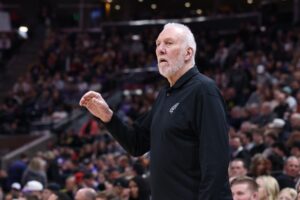For far too long, WNBA players have been left behind by their male counterparts when it comes to pay. The issue has been building since the league’s conception in 1996 and has reached its peak as of late. The WNBA’s struggle for equal pay is becoming more and more public and heated by the day. Many fans, media, players, coaches, and executives alike are beginning to choose sides through both the media and the various social media platforms. All WNBA players need side-jobs (some women even play overseas in the WNBA offseason), to maintain their lifestyles.
Uneven Revenue Shares
A common misconception amongst fans is assuming that WNBA players want the same 30+ million-dollar contracts that the NBA signs their stars to every summer. That is most certainly not the case. WNBA players are not asking for an equal amount of money as NBA players. No, the WNBA players’ struggle for equal pay is not tied to the overall amount of money that they make in comparison to the NBA, but rather the significantly lower percentage of overall league revenue that is given to WNBA Players. The WNBA as a league commits 20 percent of its revenue to pay its players. To put into perspective just how low that is, the NBA gives players 50 percent of their total revenue.
NBA players are actually supportive of WNBA players receiving a higher share of the league revenue. Often, those with opinions against a more equal salary structure are fans who aren’t fully informed on the issue. In other cases, it’s the kind of never-picked-up-a-ball-in-their-life fans who believe that they themselves could take a WNBA 1-on-1. Unfortunately, regardless of who they are, too many basketball fans aren’t supportive in the least of the WNBA’s struggle for equality. That’s wrong. Seeing as they are the main attraction bringing in revenue, players should most definitely receive a higher share than 20 percent.
To make matters worse, WNBA players do not share in the profits of their own jersey sales. LeBron James, Stephen Curry, even retired players like Kobe Bryant and Tracy McGrady all profit from their jersey sales. Popular WNBA former and current players, like Candace Parker, Maya Moore, and Sue Bird make nothing from their jersey sales.
The NBA’s Past Revenue Shares
Many can argue that a lower total revenue demands a lower share to the players for need in other areas. That would be a valid enough point, had the NBA’s 1970-1971 Seattle SuperSonics (now Oklahoma City Thunder) not dished out approximately 63.5% of their $992,000 to players, per Rodney Douglas Fort. That fact negates Dallas Mavericks owner Mark Cuban’s (and many others’) justification for the NBA/WNBA wage gap.
The Future of the WNBA
In the years to come, there is no doubt in anyone’s mind that the fight for equity will continue. It could take years, even decades, for us to reach a point at which WNBA players are fairly compensated. Former NBA player and current ESPN analyst Jalen Rose has some thoughts on how the WNBA can hasten that process. To summarize, he believes that with enough marketing, the WNBA can increase their revenue to the point where player salaries can increase regardless of their share of the revenue — which, again, is much too low. Whether that’s true or not, the fact remains — WNBA players do not make nearly as much money as they should.
Main image credit:
Embed from Getty Images






